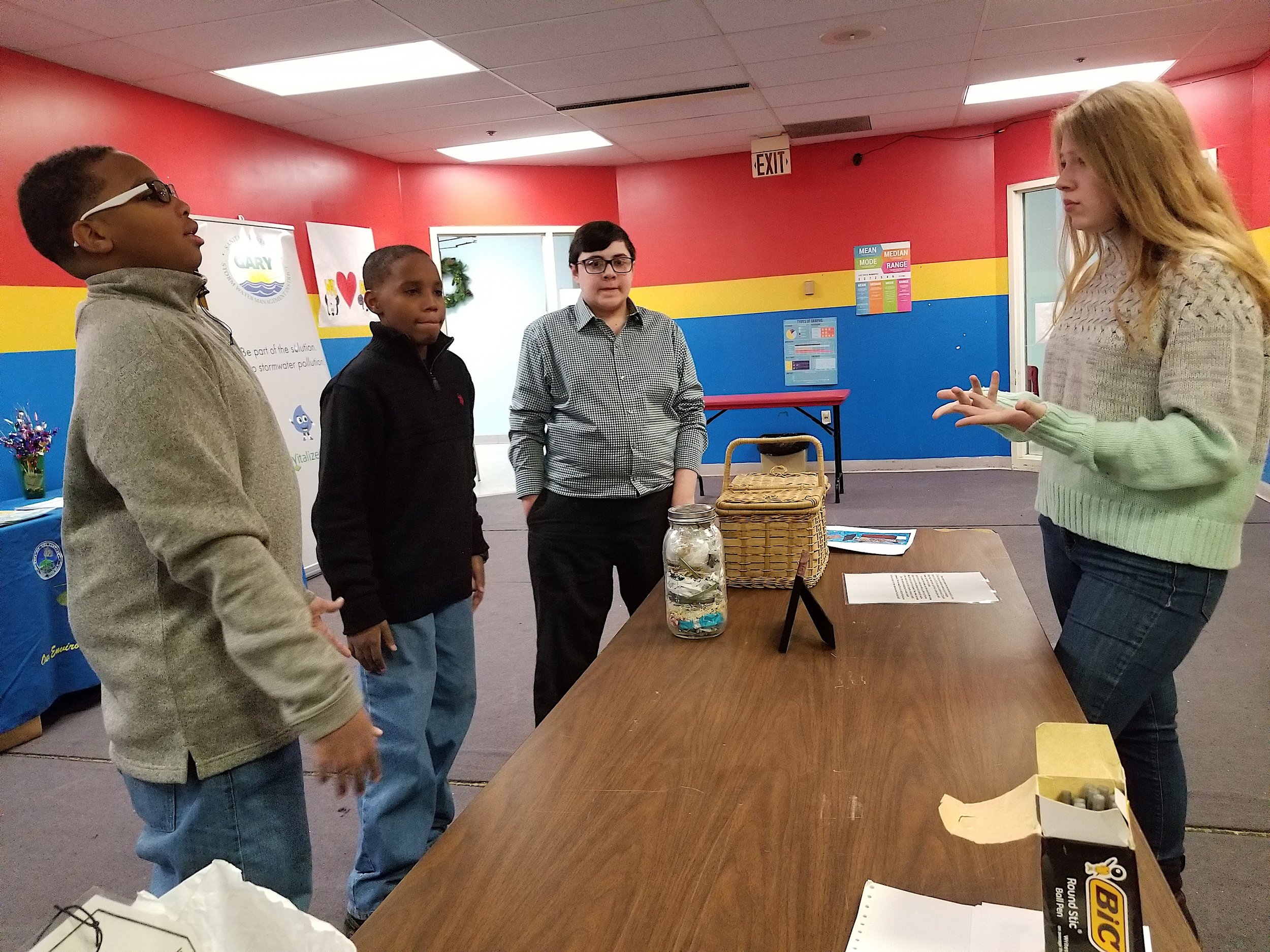By Cadyn Waxingmoon, Earth Charter Indiana intern
A trip to northern Indiana the first week of 2018 introduced me and my teammates to several extremely bright students. The purpose of the visit was to hold a summit for an environmental club from Steel City Academy, a charter school in Gary. The summit was a way of acquainting them with Youth Power Indiana and seeing if any of our programs would be relevant to them as citizens of Gary. Not having any information on the group of students beforehand, we worried about possible disinterest, boredom, and other side effects of being forced to attend an event by a parent or teacher. Our concern was thankfully superfluous, as the assembly of two dozen youth was nothing but smart, curious and attentive while still remaining vivacious. We learned that the students attending had each been hand selected by their Steel City Academy teachers as a leader amongst their peers who would help change the world.
For the first activity of the day we sat in a large circle and shared our name, age, why we were here and what we were thankful for. I happily realized the group had a four year age range, as working with more than one grade level at a time is always enjoyable. Some kids did jokingly admit they had been required to come to the summit, but they were smiling. Most of the kids said they were here to learn more about climate change, so it was fitting that Jim had prepared an informative slideshow about our planet’s climate. The presentation focused on the difference between climate and weather, weather being the day to day and climate being the long term state of the atmosphere. The environmental club already fully comprehended most of the presentation but still asked several questions which sparked discussions.
Climate Change in a Jar experiment
When the slides finished we took a short break before dividing into groups for rotation. Three tables had been set up with hands-on projects/topics of conversation for the teams to tinker with. At one station there was Climate Change In A Jar, where students place thermometers in two mason jars, one filled with Carbon, cover the jars in plastic wrap and set them both under heat lamps. According to the inquiry, the temperature of the jar containing Carbon increases much faster than the jar full of “regular” air, thus providing a quick and fun explanation of the greenhouse effect. Another table featured team-member Cora holding a session on the carbon and water footprint of different foods.
Table number three was split between me at Jim at one end, and myself at the other, dividing our group of students and swapping them halfway through our session’s timeslot. Jim had his kids analyze the true price of everyday items we take for granted, such as phones, fruit and fast food, considering the environmental impact of factories as well as the wellbeing of those who work in them. Meanwhile, I was talking with my half about garbage. We looked at materials most commonly found in landfills (paper, plastic, food waste, etc.) and thought of alternate methods of disposal like reuse, recycling and composting. Trash does not always go to landfills or incinerators though, and all too often we see videos of wildlife harmed by our careless behavior, so my station included talking points about waste found in the stomach of a dying whale. Each group listened and contributed by breaking into conversations about the workshop without much or any prodding from me.
After the last rotation was lunch and a showing of Little Warriors, a short documentary by Sam Miro covering Youth Power Indiana’s victories in passing Climate Resolutions. The group conversed with Jim about the film once it had ended, but soon it was time to go home. We had a long car ride ahead of us, and as we said our goodbyes I got the feeling we would be back soon.





